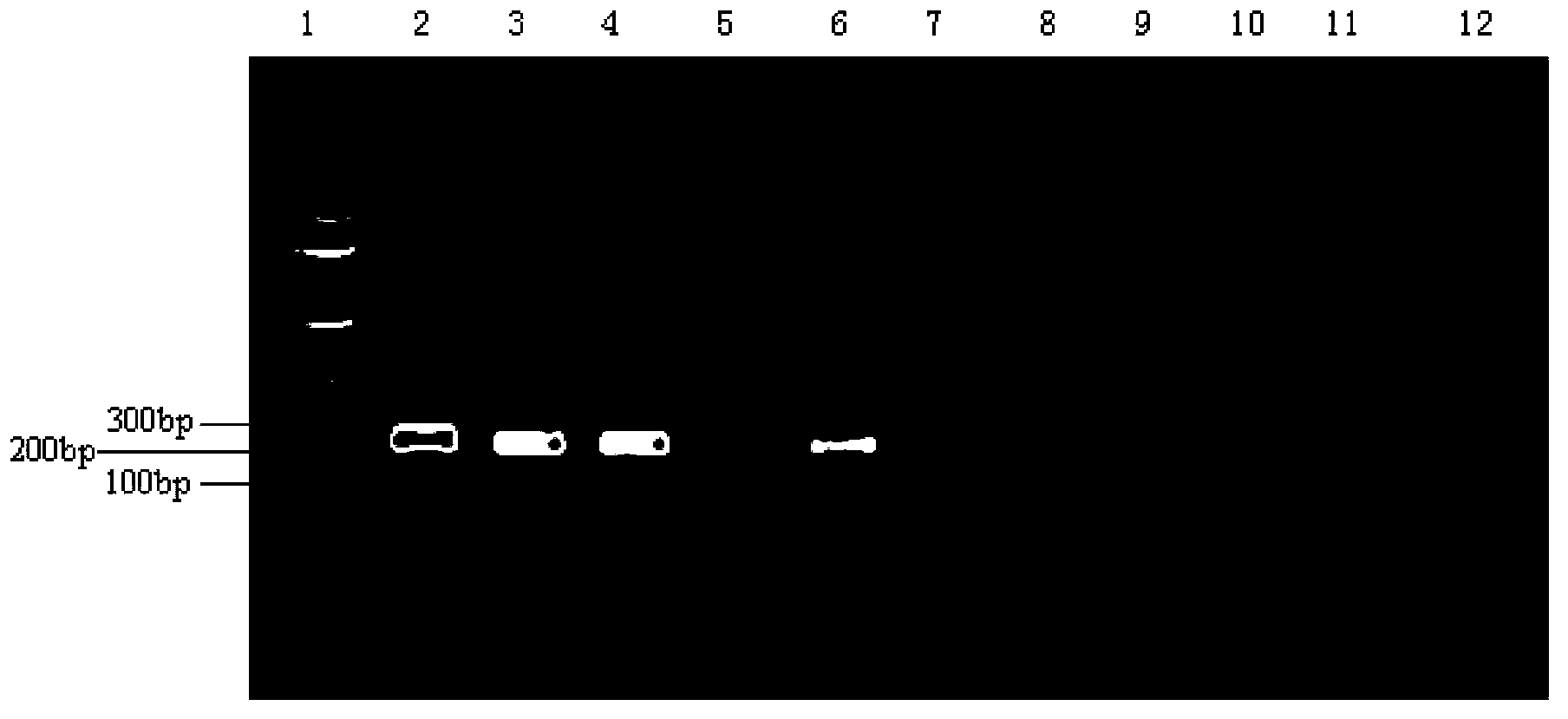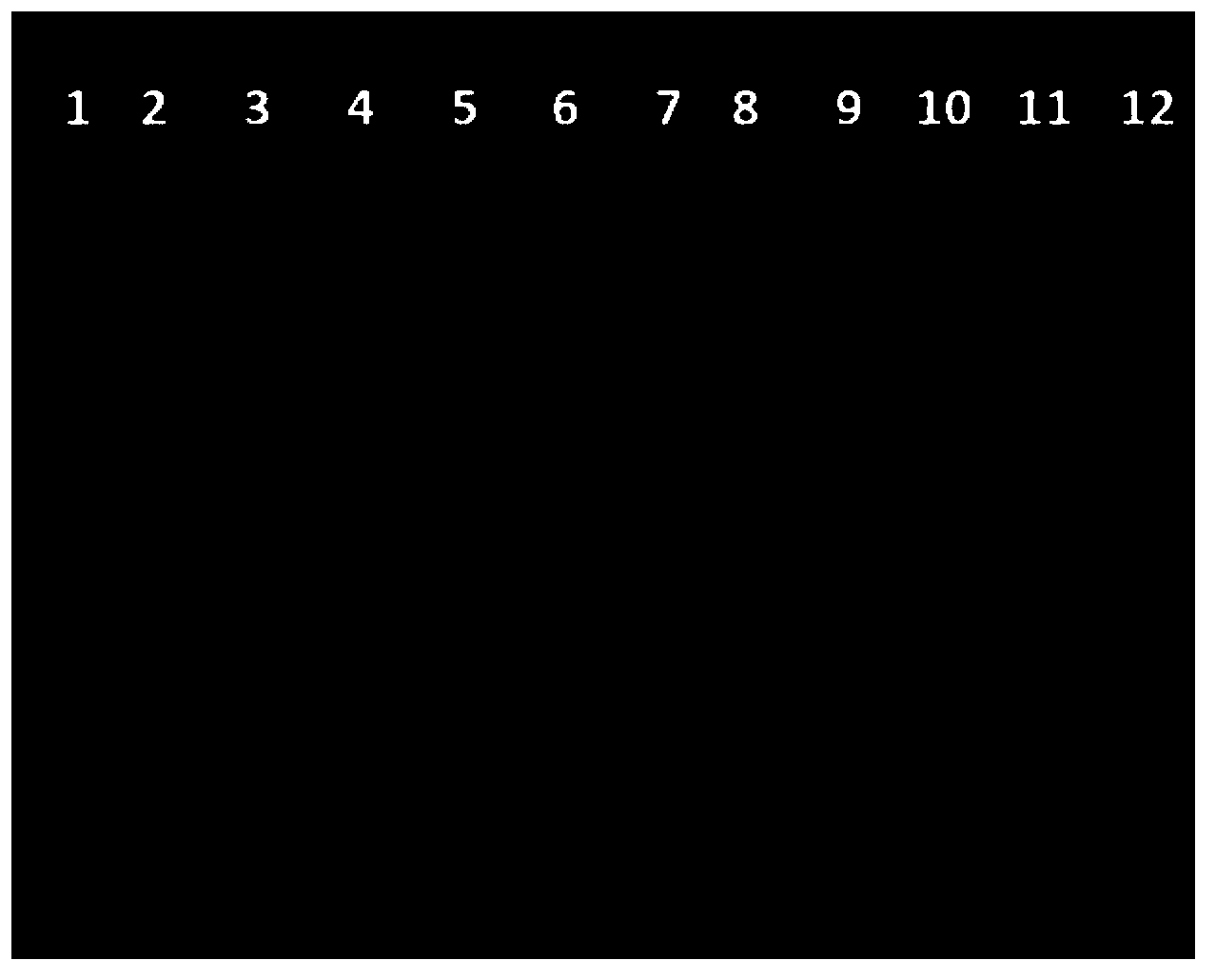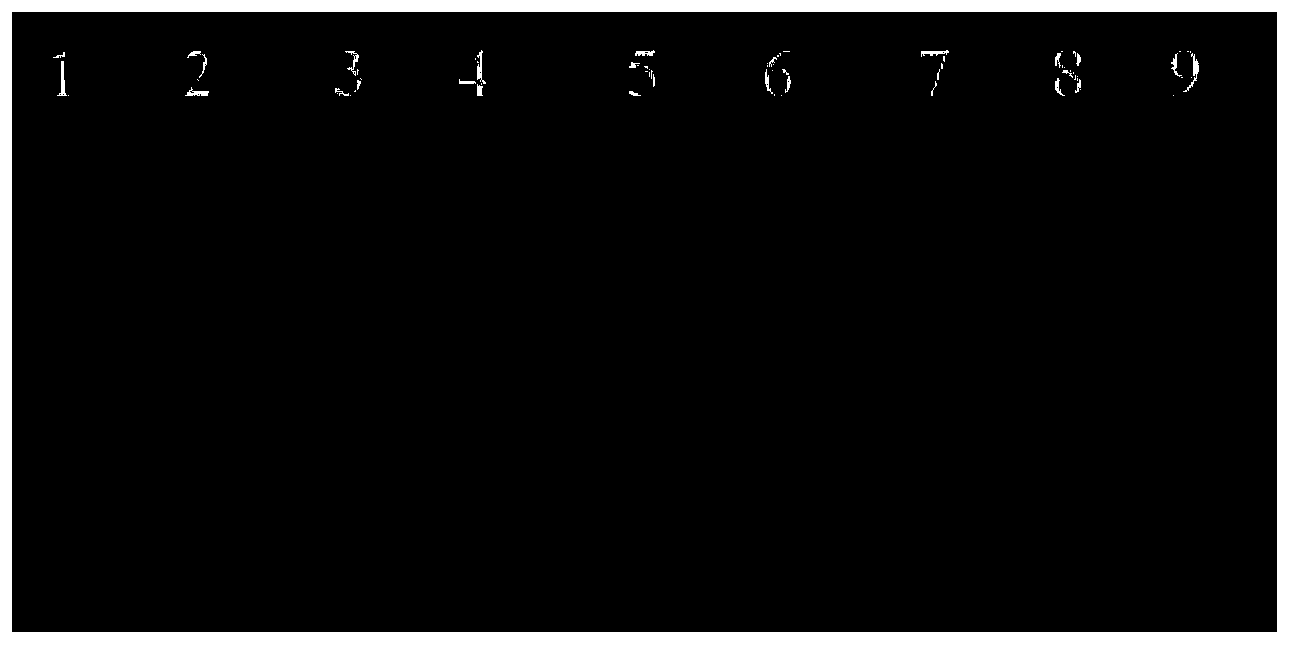Method for room temperature amplification of DNA
A room temperature amplification and room temperature technology, which is applied in the field of DNA amplification, can solve problems such as interference with detection effects, easy side reactions, and complex reaction systems, and achieve the effects of shortening reaction time, improving speed and efficiency, and simplifying the extension process
- Summary
- Abstract
- Description
- Claims
- Application Information
AI Technical Summary
Problems solved by technology
Method used
Image
Examples
Embodiment 1
[0051] Embodiment 1 Conventional PCR and comparative experiment of the present invention
[0052] 1. Preparation of template DNA
[0053] The DNA of the pUC18-Rad18B plasmid was extracted using a commercial nucleic acid extraction kit (Qiagen Company) according to its instructions. Wherein, the pUC18 plasmid contains human Rad18B gene.
[0054] Among them, the construction of the pUC18-Rad18B plasmid is as follows:
[0055] Using human cDNA as a template (purchased from Shanghai Tianyu Biotechnology Co., Ltd.), and using AAA TCT AGA TAT GAA TCA TTCCAG CTT TG (shown in SEQ ID NO.1) and AAA GGT ACC TGT CGA CCC CGG CCC GTA G (SEQ ID NO.2) are the upstream and downstream primers, amplified by PCR to obtain the amplified fragment of the human Rad18B gene, and then, the amplified fragment of the human Rad18B gene is digested with XbaI and KpnI to obtain the DNA fragment of the human Rad18B gene , and then, insert the DNA fragment into the pUC18 plasmid (purchased from Shanghai Ti...
Embodiment 2
[0084] Example 2 Room temperature amplification of human gene Rad18B
[0085] 1. Preparation of template DNA
[0086] A commercial nucleic acid extraction kit (Qiagen Company) was used to extract the DNA of the pUC18-Rad18B plasmid according to its instructions to obtain template DNA.
[0087] Wherein, the template DNA is incubated at 30° C. and diluted sequentially by 10 times to obtain diluted template DNA.
[0088] 2. DNA amplification at room temperature
[0089] Mix template DNA (including diluted template DNA) with amplification reagents, and perform DNA amplification at 30°C for 30 minutes (the total reaction volume of DNA amplification is 10 μL) to obtain the DNA amplification product of human Rad18B gene; , the amplification reagent is composed of the following components:
[0090] 1) 20mM pH7.5 Tris-HAc
[0091] 2) 50mM KAc
[0092] 3) 3mM Mg(Ac) 2
[0093] 4) 2mM mercaptoethanol
[0094] 5) Polyethylene glycol (PEG) 20000 with a mass percentage of 2%
[009...
Embodiment 3
[0105] Example 3 Room temperature amplification of human gene Rad18B
[0106] Operate according to the method of Example 2, wherein the amplification reagent is modified to consist of the following components:
[0107] 1) 30mM pH7.8 Tris-HAc
[0108] 2) 80mM KAc
[0109] 3) 5mM Mg(Ac) 2
[0110] 4) 4mM mercaptoethanol
[0111] 5) Polyethylene glycol 20000 with a mass percentage of 3.5%
[0112] 6) 80 μM dNTPs
[0113] 7) 500nM of the forward primer shown in SEQ ID NO.3, 500nM of the reverse primer shown in SEQ ID NO.4
[0114] 8) 0.8mM ATP
[0115] 11) 80nM human polη polymerase
[0116] 12) 1.5 μM human RPA
[0117] 13) 1 μMT4 bacteriophage UV-sensitive enzyme 1
[0118] 14) 1 μM MT4 phage UV-sensitive enzyme 2.
[0119] The DNA amplification products in this example were subjected to polyacrylamide gel (10% non-denaturing) electrophoresis, and the results were as follows: image 3 As shown, the amplified product is only a 226bp product, and there is no detectable...
PUM
| Property | Measurement | Unit |
|---|---|---|
| concentration | aaaaa | aaaaa |
Abstract
Description
Claims
Application Information
 Login to View More
Login to View More - R&D
- Intellectual Property
- Life Sciences
- Materials
- Tech Scout
- Unparalleled Data Quality
- Higher Quality Content
- 60% Fewer Hallucinations
Browse by: Latest US Patents, China's latest patents, Technical Efficacy Thesaurus, Application Domain, Technology Topic, Popular Technical Reports.
© 2025 PatSnap. All rights reserved.Legal|Privacy policy|Modern Slavery Act Transparency Statement|Sitemap|About US| Contact US: help@patsnap.com



